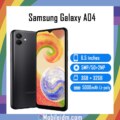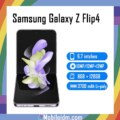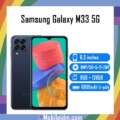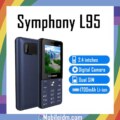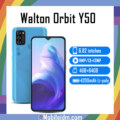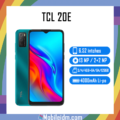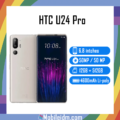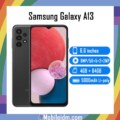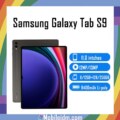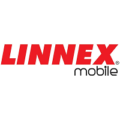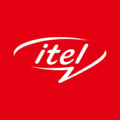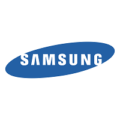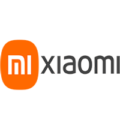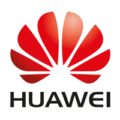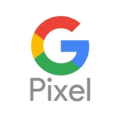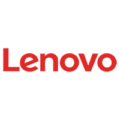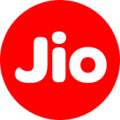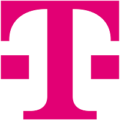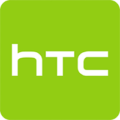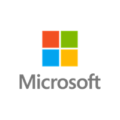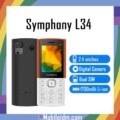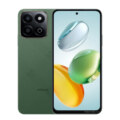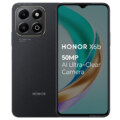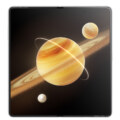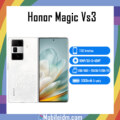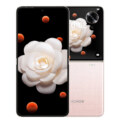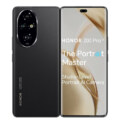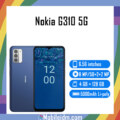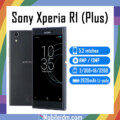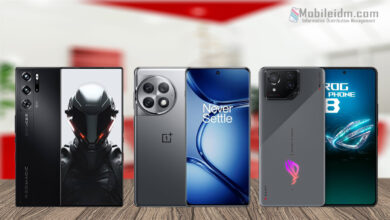- Home
- All Products
- Samsung
- Samsung Galaxy S9
Samsung Galaxy S9
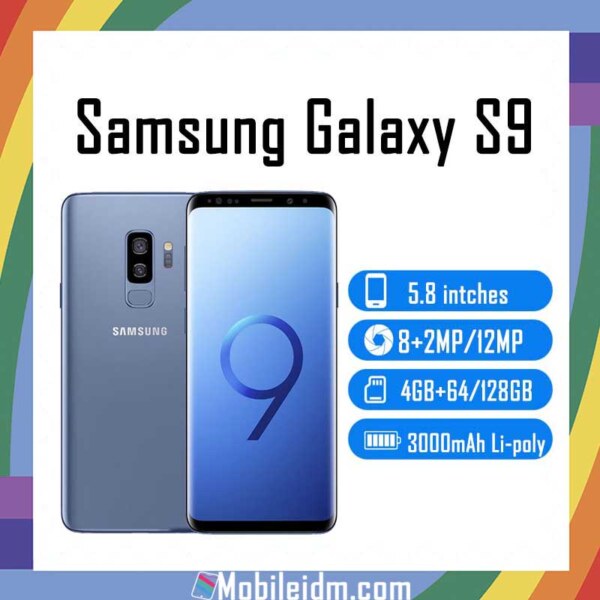


Samsung Galaxy S9 Price and Specifications
General
| Device Type | Smartphone |
| Model | Samsung Galaxy S9 |
| Announced | 25 February 2018 |
| Released | 09 March 2018 |
| Status | Available |
| Warranty | 1 Year Warranty |
| Variants | 4GB/64GB ৳44,000 | 4GB/128GB ৳52,000 | 4GB/256GB ৳55,000 |
Display
| Display Type Display Technology => A number of display technologies and types used in mobile phones => TFT (Thin Film Transistor), IPS (In-Place Switching), OLED (Organic Light Emitting Diode), AMOLED (Active-Matrix Organic Light-Emitting Diode), Super AMOLED (an even advanced version of AMOLED), Resistive Touchscreen (Resistive touchscreens contain two layer of conductive material with a very small gap between them which acts as a resistance), Capacitive Touchsceen (Capacitive touchscreen technology consists of a layer of glass coated with a transparent conductor) | Super AMOLED |
| Size | 5.8" Display |
| Resolution | 1440 x 2960 pixels |
| Aspect Ratio | 20:9 ratio |
| Display Colors Display Colors is refers to the number of different shades of colors that the screen is capable of displaying => 64K colors, 256K colors and 16 million colors, Obviously 16M is highest available range of colors and better than others. | 16M colors |
| Pixel Density Pixel Density (PPI) is refers to the concentration of pixels on a particular display, measured in pixels per inch (ppi). Pixel density is calculated by dividing the diagonal pixel resolution of a display by its diagonal size, higher pixel density better display quality. | ~570 ppi density |
| Touch Screen | Multi-Touch |
| Display Protection Display Protection => Gorilla Glass is a special alkali-aluminosilicate glass shield with exceptional damage resistance that helps protect mobile displays from scratches, drops, and bumps of everyday use, It is always better to go for a smartphone with Gorilla Glass for that added protection and peace of mind. | Corning Gorilla Glass 5 |
| Features | HDR10 |
Body
| Build Material | Glass front (Gorilla Glass 5), glass back (Gorilla Glass 5), aluminum frame |
| Dimensions | 147.7 x 68.7 x 8.5 mm (5.81 x 2.70 x 0.33 in) |
| Weight | 163 g (5.75 oz) |
| Colors | Midnight Black, Coral Blue, Titanium Gray, Lilac Purple, Burgundy Red, Sunrise Gold, Ice Blue |
Camera
| Rear Camera Camera is able to capture photographs and usually videos, The most important characteristics of a camera are the resolution (measured in megapixels), lens focus type (fixed or automatic), higher megapixel cameras are known to capture higher quality photos, but not always a good measurement of the photos quality. | 12MP |
| Secondary | No |
| Flash Flash Light => There is commonly two types of flash lights are used in camera mobile phones, LED Flash (LED flash offers lower power consumption with drive circuitry that takes up very little room, LEDs can be strobed faster than any other light source), Xenon Flash (xenon flash produces an extremely intense full-spectrum white light for a very short duration) | Yes |
| Front Camera | 8MP+2MP |
| Features |
Rear: LED flash, auto-HDR, panorama Video: 4K@30/60fps, 1080p@30/60/240fps, 720p@960fps, HDR, stereo sound rec., gyro-EIS & OIS (30fps) Front: Dual video call, Auto-HDR Video: 1440p@30fps |
Battery
| Battery Type Battery Type => Cell phones run on various kinds of batteries depending on the manufacturer, phone size or shape and features. There are basically four types of cell phone batteries => Lithium Polymer, Lithium Ion, Nickel Metal Hydride and Nickel Cadmium. | Li-Ion (Lithium Ion) |
| Capacity Battery Capacity is a measure (typically in Amp-hr) of the charge stored by the battery, and is determined by the mass of active material contained in the battery. The battery capacity represents the maximum amount of energy that can be extracted from the battery under certain conditions. | 3000mAh |
| Placement | Non Removable |
| Charging | 15W wired, QC2 Wireless (Qi/PMA) (market dependent) |
Platform
| Operating System OS => Every computer system run on a base software called Operating System (OS). Operating System controls all basic operations of the computer (such as smartphone, PDAs, tablet computers and other handheld devices). The Operating System allows the user to install and run third party applications (apps), apps are used to add new functionality to the device. | Android 8.0 (Oreo), upgradable to Android 10, One UI 2.5 |
| Chipset Chipset is a group of integrated circuits designed to perform one or a more dedicated functions, often with real time computing constraints, Popular smartphones are equipped with more advanced embedded chipsets that can do many different tasks depending on their programming. | Exynos 9810 (10 nm) - EMEA Qualcomm Snapdragon 845 (10 nm) - USA/LATAM, China |
| CPU CPU (Central Processing Unit) mostly known as processors, CPU processes instructions in order to carry out certain functions that make your device operate properly. Processors are often described as the brain of computers, smartphones and tablets, Smartphones and tablets rely on processors to carry out their every task, Processors are an incredibly important factor in selecting any type of computing device, including your smartphone. | Octa-core (4x2.7 GHz Mongoose M3 & 4x1.8 GHz Cortex-A55) - EMEA Octa-core (4x2.8 GHz Kryo 385 Gold & 4x1.7 GHz Kryo 385 Silver) - USA/LATAM, China |
| GPU GPU (Graphics Processing Unit) is a single-chip processor designed to rapidly manipulate and alter memory to accelerate the creation of images in a frame buffer intended for output to a display, This includes things such as lighting effects, object transformations, and 3D motion. | Mali-G72 MP18 - EMEA Adreno 630 - USA/LATAM, China |
Memory
| RAM | 4GB |
| ROM | 64/128/256GB |
| External Memory Card | MicroSDXC |
Network
| SIM Type SIM (Subscriber Identity Module) is a small card that contains mobile network subscriber's account information. This allows the phone using the card to attach to a mobile network. The SIM card is most commonly associated with GSM and UMTS mobile networks. Moving a SIM card from one phone to another allows a subscriber to switch mobile phones without having to contact their mobile network carrier. SIM cards can also be used by a phone to store limited amounts of data, such as phone numbers and text messages. | Nano SIM |
| SIM | Duel Stand-by |
| Technology | GSM / CDMA / HSPA / EVDO / LTE |
| 2G bands | GSM 850 / 900 / 1800 / 1900 - SIM 1 & SIM 2 (dual-SIM model only) |
| 3G bands | HSDPA 850 / 900 / 1700(AWS) / 1900 / 2100 |
| 4G bands | 1, 2, 3, 4, 5, 7, 8, 12, 13, 14, 17, 18, 19, 20, 25, 26, 28, 29, 30, 38, 39, 40, 41, 46, 66, 71 |
| Speed | HSPA 42.2/5.76 Mbps, LTE-A (6CA) Cat18 1200/200 Mbps |
Connectivity
| Wi-fi Wi-Fi is a popular wireless networking technology using radio waves to provide high-speed network connections that allows devices to communicate without cords or cables, Wi-Fi is increasingly becoming the preferred mode of internet connectivity all over the world. | Wi-Fi 802.11 a/b/g/n/ac, dual-band, Wi-Fi Direct |
| Bluetooth Bluetooth is a wireless communications technology for exchanging data between mobile phones, headsets, computers and other network devices over short distances without wires, Bluetooth technology was primarily designed to support simple wireless networking of personal consumer devices. | 5.0, A2DP, LE, aptX |
| USB | USB Type-C 3.1 |
| GPS GPS The Global Positioning System is a satellite-based radio navigation system, GPS permits users to determine their position, velocity and the time 24 hours a day, in all weather, anywhere in the world, In order to locate your position, your device or GPS receiver must have a clear view of the sky. | GPS, GLONASS, BDS, GALILEO |
| NFC NFC (Near field communication) is a set of standards for smartphones and similar devices to establish peer-to-peer radio communications with each other by touching them together or bringing them into proximity, usually no more than a few inches. | |
| GPRS GPRS (General Packet Radio Service) is a packet oriented mobile data service on the 2G and 3G cellular communication system's global system for mobile communications (GSM), Generally, GPRS is used for the purpose of wireless data transfer, such as sharing pictures and videos or browsing the Internet via a mobile phone connection. | |
| EDGE EDGE (Enhanced Data GSM Environment) is a wireless network technology generally considered the next step in the 2G network offers data transfer rates up to four times faster than ordinary GSM networks, Generally, EDGE is used for the purpose of wireless data transfer, such as sharing pictures and videos or browsing the Internet via a mobile phone connection. | |
| Web Browser Web Browser => a web browser is a software application used to locate, retrieve and display content on the World Wide Web, including Web pages, images, video and other files, The primary function of a web browser is to render HTML, the code used to design or markup webpages. | Yes |
| Sensors Sensors are electronic components that detects and responds to some type of input from the physical environment. The specific input could be light, heat, motion, moisture, pressure and location, The output is generally a signal that is converted to use in computing systems, a location sensor, such as a GPS receiver is able to detect current location of your electronic device. |
Iris scanner, fingerprint (rear-mounted), accelerometer, gyro, proximity, compass, barometer, heart rate, SpO2 ANT+ Bixby natural language commands and dictation Samsung Pay (Visa, MasterCard certified) |
Software
| User Interface UI or user interface of a device is the look and feel of the on-screen menu system. How it works, its color scheme, how it responds to button presses, all of these things are part of the user interface. | Android |
| Java Support Java for Mobile Devices is a set of technologies that let developers deliver applications and services to all types of mobile handsets, ranging from price efficient feature-phones to the latest smartphones. Java is currently running on over 3 billion phones worldwide, and growing. It offers unrivaled potential for the distribution and monetization of mobile applications. | No |
| Facebook Facebook is a popular free social networking website that allows registered users to create profiles, upload photos and video, send messages and keep in touch with friends, family and colleagues. The site is available in 37 different languages. | |
| Youtube Youtube is a popular free video-sharing website, Youtube is the largest video sharing site in the world, Millions of users around the world have created accounts on the site that allow them to upload videos that anyone can watch. |
Media
| Audio Playback | Yes |
| Video Play | Yes, Up to 4K |
| FM Radio | |
| Alert Types | Vibration |
| Ring Tones | Yes |
| Loudspeaker | Yes |
| Earphone Jack | Yes |
Messaging
| SMS SMS (Short Messaging Service) is a text messaging service component of phone, Web, or mobile communication systems. It uses standardized communications protocols to allow mobile phone devices to exchange short text messages over the networks. | Yes |
| MMS MMS (Multimedia Messaging Service) is a standard way to send messages that include multimedia content (audio clips, video clips and images) to and from mobile phones over wireless networks using the WAP protocol. | |
| Email Email (Electronic Mail) is a system for receiving, sending, and storing electronic messages, Similar to a letter, email is text messages that may contain files, images, or other attachments sent via the internet to a recipient by using applications and software prograps. An email address is required to receive email, and that address is unique to the user. | Yes |
| IM IM (Instant Messaging) is an exchange of text messages through a software application, it enable you to create a kind of private chat room with another individual in order to communicate in real time over the Internet. | Yes |
Others Features
| Games | Yes |
| Auto Call Recorder | Yes |
| More features |
SMS(threaded view), MMS, Email, Push Email, IM MP4/H.264 player MP3/WAV/eAAC+/Flac player Photo/video editor Document viewer |
Samsung Galaxy S9 Price in Bangladesh
Samsung Galaxy S9 Smartphone Price 44,000 Tk in Bangladesh. This device has a 5.8″ inches display with Super AMOLED screen and is Chipset powered by Exynos 9810 (10 nm). This phone has One AI rear camera 12MP with flash and a Front 8MP+2MP Camera. This mobile is available in seven colors –Midnight Black, Coral Blue, Titanium Gray, Lilac Purple, Burgundy Red, Sunrise Gold, Ice Blue For those who are looking for a Smartphone that offers all the basic features, such as calling, texting, and internet browsing, Games as well as 3000mAh Li-Ion battery life, and Dual SIM (Nano-SIM, dual stand-by), then Samsung Galaxy S9 is a Definitely good phone.
| Model | Samsung Galaxy S9 |
| Price | BDT. 44,000 |
| Released | 09 March 2018 |
| Display | 5.8″ (1440×2960 pixels) |
| RAM | 4GB |
| ROM | 64GB/128GB/256GB |
| Battery | 3000mAh Li-Poly |
Unveiled on February 25, 2018, the Samsung Galaxy S9 continues to stand the test of time, blending cutting-edge technology with a sleek design. From its immersive Super AMOLED display to the powerful camera system and robust performance, the Galaxy S9 is a true flagship device.
Network and Launch
Equipped with GSM, CDMA, HSPA, EVDO, LTE technologies, the Galaxy S9 was announced on February 25, 2018, and released on March 09, 2018, making it a pioneer in the mobile industry.
Design and Display
Crafted with precision, the Galaxy S9 boasts dimensions of 147.7 x 68.7 x 8.5 mm and a weight of 163 g. The device features a glass front (Gorilla Glass 5), glass back (Gorilla Glass 5), and an aluminum frame, exuding a premium feel. Enjoy a cinematic viewing experience on the 5.8-inch Super AMOLED display with HDR10 support, offering a resolution of 1440 x 2960 pixels and an 18.5:9 ratio (~570 ppi density). The Corning Gorilla Glass 5 ensures durability, while features like 3D Touch and Always-on display enhance usability.
Performance and Platform
Running on Android 8.0 (Oreo), upgradable to Android 10 with One UI 2.5, the Galaxy S9 is powered by the Exynos 9810 (10 nm) chipset in EMEA regions and the Qualcomm SDM845 Snapdragon 845 (10 nm) in the USA/LATAM and China. The device houses an octa-core CPU and either Mali-G72 MP18 or Adreno 630 GPU, ensuring seamless multitasking and graphics performance. Storage options include 64GB/128GB/256GB paired with 4GB of RAM, utilizing UFS 2.1 technology.
Camera System
Capture moments with precision using the 12 MP wide main camera, featuring a variable aperture (f/1.5-2.4), dual pixel PDAF, OIS, and a range of video recording options, including 4K@30/60fps. The selfie camera setup includes an 8 MP wide lens and a dedicated 2 MP iris scanner camera. Features like LED flash, auto-HDR, and panorama enhance your photography experience.
Audio and Connectivity
Experience immersive audio with the stereo speakers and 32-bit/384kHz audio, tuned by AKG. The inclusion of a 3.5mm jack provides flexibility for audio accessories. Stay connected with Wi-Fi 802.11 a/b/g/n/ac, Bluetooth 5.0, and USB Type-C 3.1 for fast data transfer.
Features and Sensors
The Galaxy S9 integrates advanced sensors, including an iris scanner, fingerprint sensor (rear-mounted), accelerometer, gyro, proximity sensor, compass, barometer, heart rate sensor, SpO2, and ANT+. Bixby natural language commands, Samsung Pay, and virtual proximity sensing add layers of convenience.
Battery and Charging
A non-removable Li-Ion 3000 mAh battery powers the device, supporting 15W wired charging and QC2 technology. Wireless charging (Qi/PMA) is available, market-dependent.
Performance Metrics
The Galaxy S9 showcases impressive performance metrics, including an AnTuTu score of 250,156 (v7), GeekBench score of 8,830 (v4.4), and GFXBench delivering 14fps (ES 3.1 onscreen). The display’s contrast ratio is infinite (nominal), and the camera system provides exceptional photo and video capabilities. The loudspeaker performance is commendable, achieving voice 68dB / Noise 74dB / Ring 81dB. Audio quality metrics, with Noise -93.4dB / Crosstalk -93.9dB, ensure a rich audio experience. The device achieves an endurance rating of 78 hours, highlighting its longevity in daily use.
the Samsung Galaxy S9 remains a Benchmark for premium Smartphones, Combining Exquisite design with powerful Features. Whether you’re a Photography enthusiast, a Multimedia consumer, or a power user, the Galaxy S9 delivers an Unparalleled experience. Elevate your mobile journey with the timeless masterpiece, the Samsung Galaxy S9.
Samsung Galaxy S9 Pros & Cons
Pros
- 4G network supported.
- Powerful 3000mAh battery.
- Huge storage and RAM.
- Large AMOLED display.
Cons
- Multitouch was unavailable.
FAQ:
Samsung Galaxy S9 was released on 09 March 2018.
Samsung Galaxy S9 price starts from 44,000 Tk in Bangladesh.
The Samsung Galaxy S9 comes in one RAM variants: 4GB. It also has three storage variant of 64GB, 128GB and 256GB. However, only three combinations are available in the market: 4GB/64GB, 4GB/128GB and 6GB/128GB.
The Samsung Galaxy S9 comes with a 5.8″ Super AMOLED Display with 1440 x 2960 pixels resolution.
Samsung Galaxy S9 uses the Qualcomm SDM845 Snapdragon 845 (10 nm) chip.
The Samsung Galaxy S9 has a 12megapixel main rear camera and 8megapixel (wide), 2MP (dedicated iris scanner camera) Front Camera.
No, the Samsung Galaxy S9 in not supports 5G connectivity.
The battery capacity of Samsung Galaxy S9 is 3000 mAh.
The Samsung Galaxy S9 is primarily manufactured in South Korea.
Yes, Samsung Galaxy S9 is IP68 dust/water resistant.
Above Samsung Galaxy S9 Price and Specifications is given. Please note that prices may be slightly lower or higher over time. We try to present you accurate information from their website and social media. For the most accurate and up-to-date information you can check the specifications from their official website Samsung and official social media page Samsung.
But Overall is ok
More: All Samsung Mobile
Disclaimer: We do not guarantee that the information on this page is 100% accurate and up to date.
Reviews
Disclaimer Note
We Do Not Sell Any Products This Is an Information Website.
